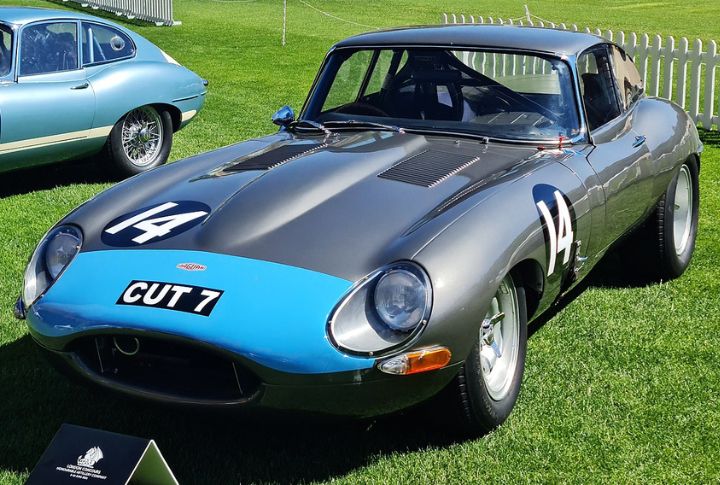
15 Classic Rides That Are Impossible to Ignore

Despite age and discontinued production, most classic cars still command unrivaled attention and admiration. The reasons for this may not be farfetched: some of these iconic vehicles introduced outstanding features that were innovative for their time and paved the way for recent technological advancements. Others left their marks as undeniable cultural symbols. Let’s look at 15 old cars that are impossible to ignore.
1964 Ford Mustang

The 1964 Ford Mustang, introduced at the New York World’s Fair, featured side scoops and a chrome-accented exterior. It also had several customizable options, including different body colors and interior designs. Ford’s base model came with a 170-cubic-inch inline-six engine, but they provided other options like the 260-cubic-inch V8 engine and 289-cubic-inch 271 V8 engine.
1969 Chevrolet Camaro

Known for its design and high-performance capabilities, the 1969 Chevrolet Camaro had aggressive front-end styling characterized by the recessed grille, rounded headlights, and sculpted hood. Additionally, the availability of the Z/28, SS (Super Sport), and RS (Rally Sport) packages allowed buyers to customize their Camaros with unique trim, badging, and performance options.
1967 Chevrolet Corvette Stingray

The car is often hailed as one of the most iconic models in Corvette history, featuring five small, circular tail lights instead of the previous year’s four. Inside, the Stingray offered a refreshing experience with a dual-cowl dashboard, new seats, and upgraded instrumentation. Interestingly, customers can order a Camaro with unique high-performance features not typically available through regular production.
1961 Jaguar E-Type

Enzo Ferrari famously called the 1961 Jaguar E-Type “the most beautiful car ever made.” The car’s aerodynamic shape, influenced by the D-Type racing car, included a long hood, sleek lines, and a low, curvy body that contributes to its timeless allure. Jaguar’s chief engineer, Bob Knight, designed an independent rear suspension to ensure smooth and responsive driving.
1957 Ford Thunderbird

A powerful 312 cubic inch (5.1-liter) V8 engine, yielding up to 300 horsepower, allowed the Thunderbird to compete with contemporary sports cars. Mated to this reliable powerhouse was a three-speed manual transmission or an optional Ford-O-Matic automatic transmission. In 1973, the Thunderbird made a brief but memorable appearance in the classic film American Graffiti, which was driven by Suzanne Somers’ mysterious blonde character.
1963 Aston Martin DB5

Italian coachbuilder Carrozzeria Touring designed the Aston Martin DB5’s sleek aluminum body, and only 1,059 units were produced between 1963 and 1965. The DB5 housed a 4.0-liter inline-six engine and 282 horsepower, allowing it to reach a top speed of 145 mph and accelerate from 0 to 60 mph in 8 seconds. It also had a five-speed ZF transmission, an upgrade from the four-speed DB4.
1965 Shelby Cobra 427

Though the 1965 Shelby Cobra 427 was initially intended to compete in the FIA’s GT class, it never officially raced in that category. This legendary sports car, designed by Carroll Shelby, had a wide, aggressive stance, flared fenders, and a distinctive grille that gave it a muscular and intimidating look. Exceptional acceleration and speed were achieved owing to a 7.0-liter V8 engine with 425 horsepower.
1970 Dodge Charger

Featuring in “The Fast and the Furious” movie series enabled the 1970 Dodge Charger to solidify its place in popular culture. Several buyers appreciated the Road/Track package, which offered heavy-duty suspensions, improved brakes, and unique styling cues. A few others loved the long hood, short deck, and “Coke bottle” shape.
1955 Mercedes-Benz 300SL Gullwing

The 1955 Mercedes-Benz 300SL Gullwing’s tubular space frame chassis necessitated the inclusion of upward-opening gullwing doors. Mercedes also included a 215 horsepower that enabled the 300SL to reach 160 mph. Another notable feature was the direct fuel injection system, a timely technological advancement that improved fuel delivery efficiency and engine yield.
1969 Dodge Challenger

In 1969, Dodge released various trims of the Challenger, including the R/T (Road/Track) package. This latest version was powered by different engines, like the legendary 426 Hemi V8 and the 440 Magnum V8. It also had an optional “Shaker hood” design with a scoop mounted directly on the top of the engine air cleaner.
1971 Plymouth Hemi’ Cuda

Powering the Cuda was Chrysler’s 426, 425-horsepower Hemi V8 engine. Without this engine, the Cuda’s 0-to-60-mph sprint would never be possible in 5 seconds. Now we know why, as one of the fastest production cars of its era, this vehicle was mentioned in Joe Walsh’s song, “Life’s Been Good.”
1969 Pontiac GTO

The car featured a distinctive “Endura” front bumper made of a flexible, color-matched material designed to withstand minor impacts without damage. Engine choices include the 400 cubic inch V8 powerplant, giving up to 366 horsepower in its highest specification. Most users believe the 1969 GTO marked the zenith of Pontiac’s muscle car offerings before changing emissions regulations altered the industry.
1967 Ferrari 275 GTB/4

For its time, the ‘4″ in the name denoted that the engine featured four cams. This 3.3-liter V12 powerhouse produced 300 horsepower and propelled the 275 GTB/4 to over 160 mph. An independent rear suspension complimented the powerful engine and bore its weight without any complaints. Did you know this car was one of the last Ferraris to feature a transaxle layout?
1969 Ford Boss 429 Mustang

Designed for NASCAR homologation purposes, this iconic Ford featured a 429 cubic inch V8 engine designed to fit into the Mustang’s engine bay. The engine produced around 375 horsepower and was crafted to compete with Chrysler’s 426 Hemi in NASCAR races. Due to the engine’s size and placement, the battery was repositioned to the trunk.
1959 Cadillac Eldorado

One standout feature of the 1959 Cadillac Eldorado was the dramatic tailfin design, which symbolized the jet-age optimism of the time. These fins also had functional taillights in their sleek structure. Notably, the Eldorado introduced Cadillac’s innovative triple braking system, featuring power brakes, self-adjusting brakes, and a dual master cylinder for enhanced safety.


